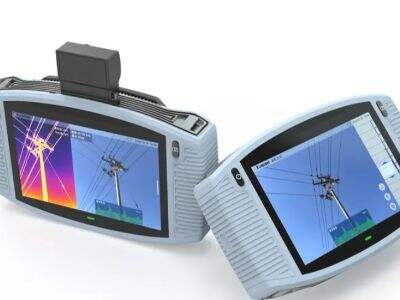Mangyaring i-subtract ang isang punto ng enerhiya mula sa parirala: Pariralang IsaPunto ng EnerhiyaPariralang DalawaPunto ng EnerhiyaPariralang TatloPunto ng EnerhiyaApatPunto ng EnerhiyaAng pangunahing benepisyo ng mga kable na nasa ilalim ng lupa ay sila ay maaaring magdala ng elektrisidad mula sa mga powers station direktong patungo sa mga tahanan, nang hindi kailanganin ang mga pylon, na nagiging sanhi para sa kanila maging cost-efficient. Ang mga kable ay patuloy na gumagana, araw-araw, upang siguraduhing mayroon tayong kapangyarihan para sa aming ilaw, mga TV at inumerableng iba pa. Ngunit minsan, maaring makakamit ng mga kable ito mga problema o mga sugat na maiiwasan sila mula sa paggana. Ito ang dahilan kung bakit kapag ito'y nangyayari, kailangan nating mabilis na matukoy ang problema bilang solusyon ay madalas na maaaring makuha at napupuntahan. Dito ang mga lokalizador ng sugat ng kable na nasa ilalim ng lupa na naglalaro ng kritikal na papel sa pagsasanay natin upang hanapin ang mga problema kahit pagkatapos na ang lupa ay kinuha.
Aralin tungkol sa mga Pangunahing Konsepto ng Pagdiagnose ng mga Isyu sa Kable
Maghanap ng isyu sa isang kable sa ilalim ng lupa ay maaaring maging isang nakakabulag na trabaho. Hindi din naman sigurado kung saan hanapin dahil inilibing ang mga kable sa lupa, paminsan-minsan mahirap silang makita. Ngunit ito ay mas madali gamit ang isang fault locator. Ang fault locators ay espesyal na kagamitan na magdadala ng isang signal pababa sa kable. Sila ay tumutulong sa amin sa paghahanap ng anomaliya sa operasyon sa signal, na ipipikit kung saan naroon ang problema. Kaya't kapag nagbago ang signal sa maling paraan, ito ay isang senyal na may mali, at ito ay eksaktong pinapahintulot kung saan ang problema.
Ang Pinakamatinding Gabay sa Pagkilala ng Mga Problema sa Nakatagong Kableng Elektriko
Hakbang 1: Surian ang Kable
Bago sumimula sa paghahanap ng problema, tingnan nang malapit ang kable. Inspekshunan bawat isa upang makita kung mayroong anumang mapanuring pinsala, tulad ng mga dent, gitling o sinasadyang wirings. Kung nakikita mo ang alinman sa mga ito, maaari mong makakuha ng ideya kung saan ito maaaringyari.
Hakbang 2: I-attach ang Fault Locator
Ang susunod na hakbang ay mag-iskakonek ng fault locator sa kable matapos ang pagsusuri ng kable. Ang tool na ito ay gagawa ng tawag sa iyong signal upang tulungan kang malaman ang problema. Upang suriin kung tumatrabaho nang tama ang fault locator, kumpirmahin na ligtas ang link.
Hakbang 3: Maglakad Sa Paligid ng Kable
Kailangan ngayon mong maglakad habang nauugnay ang fault locator sa kable. Nagdadagdag sa kabaligtas ay maaaring mag-emit ng tunog o ilaw na indicator ang fault locator upang tulungan kang matukoy ang lokasyon ng mga isyu. Isipin habang naglalakad ka sa tabi ng kable patungo sa signal. Kung lumalakas ang tunog o ang intensidad ng ilaw, mas malapit ka na sa problema. Sundin ang signal hanggang maigsi, ibig sabihin'y nakita mo na kung saan naroon ang problema.
Paghanap ng Problema sa Kable SENSITIVE Underground Signal
Tip 1: Gamitin ang Fault Locators
Maaaring makabisa ang fault locator sa pagtakbo ng proseso ng pagtukoy sa problema. Inaasahan sa mga tool na ito na tulungan kang gumawa nito nang mas madali at i-save ang oras.
Tip 2: Surihin ang lugar
Kapag hinahanap mo ang sanhi, huwag kalimutan ang lugar malapit sa kable. Hanapin ang anumang makikita na pinsala sa kable na maaaring tulungan ka sa paghahanap ng isyu at diskontinuho sa kable. Minsan, ang nasa itaas ng lupa ay maaaring magbigay ng mahalagang insights tungkol sa nasa ilalim ng lupa.
Tip 3: Surian ang Lupa
Dapat din inspeksyonin ang lupa na nakakubkob sa kable. Kung ang lupa ay sobrang konduktibo, maaari itong tulungan kang mas madaling hanapin ang problema. Ang kondukibilidad (isang sukat kung gaano kadali umuubos ang kuryente sa lupa) Na ito ay may mataas na antas ng kondukibilidad, na maaaring gumawa ng mas akurat na mga signal para sa detector ng problema.
Pagkilala at Pagluluok ng Mga Problema sa Kable sa Ilalim ng Lupa
Habang higit mo matutukoy ang problema, higit kang makakatulong sa pagsasara ng kable. Pagkilala kung ano ang uri ng problema ay mahalaga dahil ito ay magpapasiya kung paano mo ito aari-arian. Mga karaniwang problema sa kable na maaaring makita mo ay kasama ng mga sumusunod:
Maikling circuit - Halimbawa, nangyayari ang maikling circuit kapag dalawang o higit pang kawad ay umuwi sa isa't-isa. Maaaring magdulot nito ng sobrang pamumuhunan ng kuryente, tulad ng mga power surge at iba pang mga problema.
Bukas na Circuit — Ang bukas na circuit ay nangyayari kapag ang kable ay nahihinto o tinatanggal. Nagreresulta ito ng kabuuang pagkakaputok, kaya hindi makakafungsi anumang bagay na nakakabit sa kable na iyon.
Ground Fault – Kapag humawak o tumutunog ang isang o higit pang kawad sa lupa, tinatawag itong ground fault. Maaari din itong pahintulutan ang masyadong dami ng kuryente na bumubuhos, na maaaring maging peligroso.
Gupitin muli ang kable upang gawing dalawang dulo (25cm) ng nasiraan na bahagi. Ito ay isang sektor ng fabricating factory na isang komplikadong at buhay na kapaligiran. Kapag nag-uundehang ginagawa ang mga uri ng elektrikal na komponente, lagi mong tandaan na ang kaligtasan ay una. Kapag may dubla, mabuting gawin ay magtanong ng tulong mula sa isang propesyonalyang may karanasan sa larangan na ito.

 TL
TL
 EN
EN AR
AR HR
HR CS
CS NL
NL FR
FR DE
DE EL
EL HI
HI IT
IT JA
JA KO
KO NO
NO PL
PL PT
PT RO
RO RU
RU ES
ES SV
SV IW
IW ID
ID SR
SR SK
SK UK
UK VI
VI ET
ET HU
HU TH
TH TR
TR FA
FA MS
MS GA
GA HY
HY AZ
AZ UR
UR BN
BN LA
LA MN
MN KK
KK
